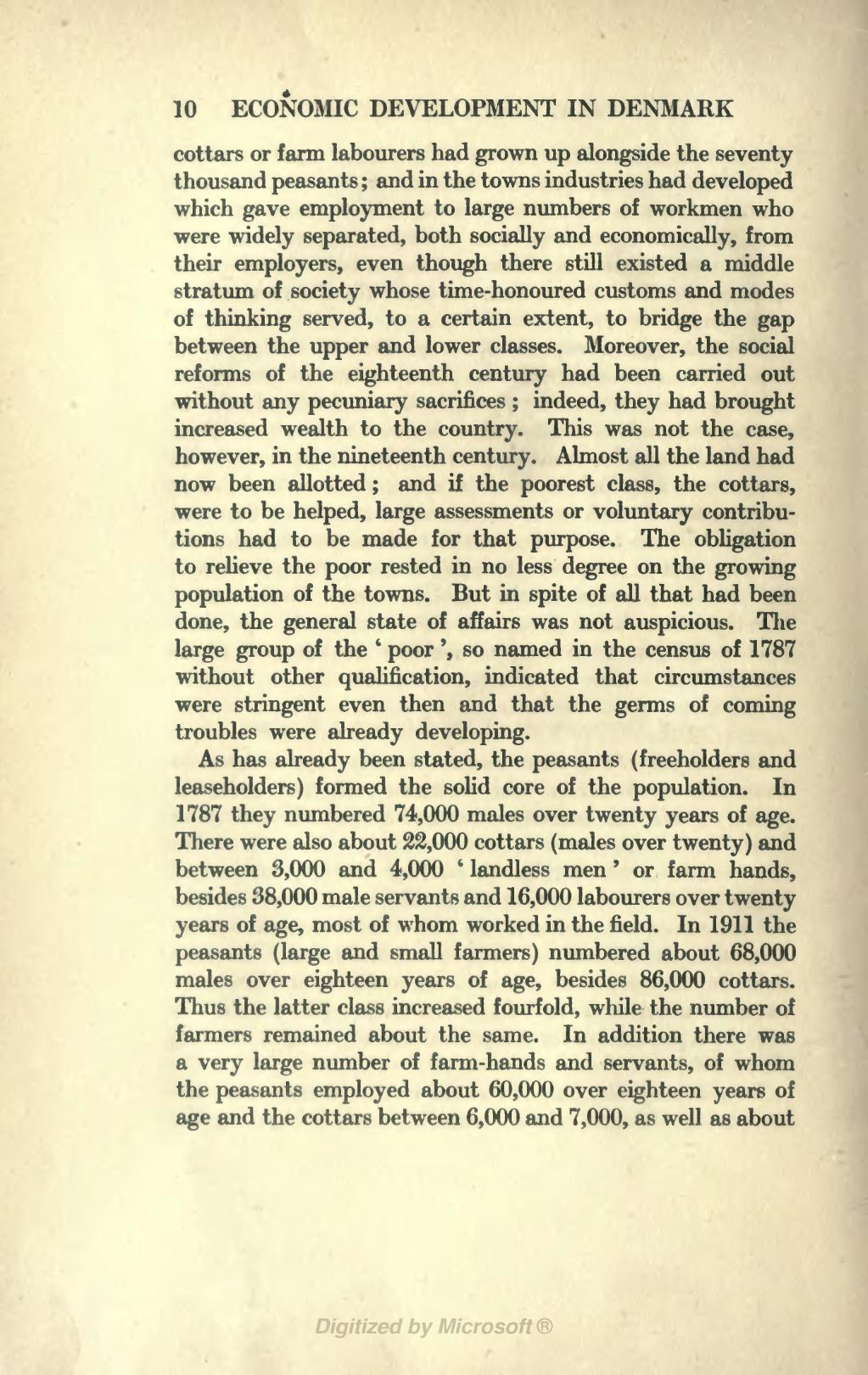cottars or farm labourers had grown up alongside the seventy thousand peasants; and in the towns industries had developed which gave employment to large numbers of workmen who were widely separated, both socially and economically, from their employers, even though there still existed a middle stratum of society whose time-honoured customs and modes of thinking served, to a certain extent, to bridge the gap between the upper and lower classes. Moreover, the social reforms of the eighteenth century had been carried out without any pecuniary sacrifices; indeed, they had brought increased wealth to the country. This was not the case, however, in the nineteenth century. Almost all the land had now been allotted; and if the poorest class, the cottars, were to be helped, large assessments or voluntary contributions had to be made for that purpose. The obligation to relieve the poor rested in no less degree on the growing population of the towns. But in spite of all that had been done, the general state of affairs was not auspicious. The large group of the 'poor', so named in the census of 1787 without other qualification, indicated that circumstances were stringent even then and that the germs of coming troubles were already developing.
As has already been stated, the peasants (freeholders and leaseholders) formed the solid core of the population. In 1787 they numbered 74,000 males over twenty years of age. There were also about 22,000 cottars (males over twenty) and between 3,000 and 4,000 'landless men' or farm hands, besides 38,000 male servants and 16,000 labourers over twenty years of age, most of whom worked in the field. In 1911 the peasants (large and small farmers) numbered about 68,000 males over eighteen years of age, besides 86,000 cottars. Thus the latter class increased fourfold, while the number of farmers remained about the same. In addition there was a very large number of farm-hands and servants, of whom the peasants employed about 60,000 over eighteen years of age and the cottars between 6,000 and 7,000, as well as about
